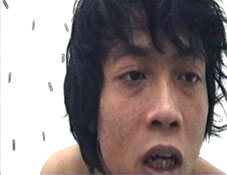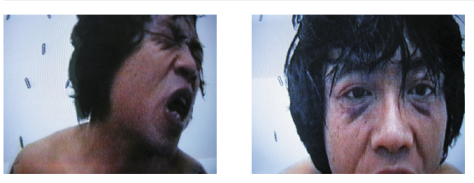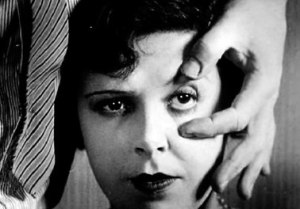Chairil Anwar was regarded as Indonesia’s greatest twentieth-century poet. Indonesian foremost literary critic H.B. Jassin proclaimed him to be the founder of Generation ’45 of Indonesian literature. Born on July 22, 1922 in Medan, North Sumatra, Chairil attended the Hollands Inlandsche School (HIS), a Dutch elementary school for the natives. He continued his education at the Meer Uitgebreid Lager Onderwijs, a Dutch junior high school, but he dropped out. At the age of nineteen, Chairil moved with his mother to Jakarta where he came in contact with the literary world. Despite his unfinished education, Chairil had an active command of English, Dutch and German, and he read the works of international authors.
In this paper I attempt to analyze four poems, “Aku” (“Me”), “Senja di Pelabuhan Kecil” (“Twilight at a Little Harbor”), “Rumahku” (“My House”), and “Yang Terampas dan yang Putus” (“The Captured and the Freed”). The selection of these poems is based on the principal theme of each poem, namely: identity, love, poetry and language, and death.
There are several factors that create ambiguity in Chairil Anwar’s language. The first is homonymy, or two words with the same pronunciation but different meanings. Second, multivalence, a word that has more than one meaning, for example baru means “new” and “just”. The third is transposition without formal indication. This has to do with the part of speech. Fourth, the paucity in Indonesian of phrase marker. Another factor is the frequent omission of subject pronouns, articles and copulas, for example adalah (“to be”) (Oemarjati in Echols 553). However, what makes the reading of the poems more intriguing is the English rendering or translation. Translation is a way of interpretation. Yet poetry is open to multiple interpretations. Thus in this paper I will discuss the multiple meanings based on the original Bahasa poems.
Aku (Me)
As already mentioned, the main theme of this poem is identity. Here the narrator calls himself binatang jalang, or wild beast. One way of reading a poem is by taking the words’ meanings literally. The attribute of jalang has a sexual connotation (which is lost in the translation. Calling a woman jalang is the same as calling her a whore. The “I” in the poem is “wild” because of his hedonistic life. Chairil indeed had a profane lifestyle. He died young at the age of twenty-six of syphilis, tuberculosis, typhus and cirrhosis of the liver.
However, we can also read the “I” as the initiator of Indonesian modern poetry. Chairil is a pioneer of literature in his era. His style was totally new, a breakthrough. H.B. Jassin said that Chairil Chairil “is the one who brought about a radical break in Indonesian literature” (151). This is why he is often regarded to represent the image of “wild beast” in this poem. He is damned from “the herd”. He is hurt and suffering. However, he does not care about what others think of him. All that matters to him is himself, with “[his] wound and … pain”.
But can a poet be separated from history? The second interpretation is the narrator as a poet in relation to his predecessors. Chairil has complex relations with them. We can name a lot of writers that may have influenced Chairil. This is because he was a keen reader of world literature. Moreover, he was a translator. Some of his translation works are Eliot’s poetry, Rilke’s letters. Andre Gide’s Pulanglah Dia Si Anak Hilang (1948), John Steinbeck’s Kena Gempur (1951). Critics also found that some of his poems were later discovered as adaptations from the poems by, among others, W.H. Auden, H. Marsman, Willem Elsshot, J. Slauerhoff, Archibald MacLeish and Edgar du Perron[1]. True, as TS Eliot says in Tradition and Individual Talent, writer or artist can be judged by the conventions or aesthetics of his predecessors. His works are compared and contrasted with that of the previous era. Some critics also see the influence of Indonesian poet Amir Hamzah (1911-1946) of Pujangga Baru Generation. As a man of letters who wrote in Indonesian, Hamzah gave a lot of contribution to the development of Malay language to become Indonesian national language. Malay words are in his poetry vocabulary. In his letter to literary figure Armijn Pane, Hamzah asserted that Malay is a beautiful language. Bahasa Indonesia is a symbol of heroism and Islam.
However, Chairil is Chairil and Hamzah is Hamzah. Each of them has his own poetic character and philosophy. Hamzah is of East-oriented tradition. He collected and translated poems from the East in Setanggi Timur, published in 1939. Hamzah is rooted in his nation. On the other hand, Chairil was influenced by Western tradition. He included ancient Greek and English myths in his poetry, such as Eros, Ahasveros, as well as Romeo and Juliet.
Besides identity, the poem also talks about God and life. One of the most memorable lines of Chairil is “I want to live another thousand years”. Individualism and existentialism are also the traces of Western philosophy in the poem. German philosopher Heidegger inquires into the “being that we ourselves are”. The individual and the public are always in tension. According to him, ‘I’ is an entity whose essence is exactly to be and nothing but to be. Humans must make a choice every time in order to maintain their liberty. This is further developed by Jean-Paul Sartre, whose proposition is that human is for itself (pour soi) and not emasculated by its determination. Chairil’s wish to live extremely long is a negation of God, seen under the light of Friedrich Nietzsche’s nihilism. The thesis of the death of God is due to the collapse of human morality. Morality is orchestrated by the ‘will to power’. Yet the narrator of “Me” is not an ordinary person. He is exiled, banished by his people. The people or ‘crowd’, in line with Kierkegaard and Nietzsche, is ‘untruth’. The so-called autonomous self-legislating individual is a merely herd animal that deliberately train itself to succumb to the universal morality (Crowel). The ‘bullets [that] pierce [Chairil’s] skin’ are the morality.
In addition to existentialism, Generation of ’45 falls into the thoughts of universal humanism. (Jassin 54). Although this term seems to have been appropriated in Indonesian literary criticism, I find it hard to define. If it is to embrace all humanisms (Renaissance humanism, Judaism humanism, Secular humanism, etc.) the effort would only create problems and contradictions. So I would rather see it as simple humanism, the idea that human is the center of the world. The freedom of expression, of organization and other basic rights are also implied. This goes with the themes of rigorousness, struggle and nationalism, which are typical in the Generation of ‘45. ‘Universal humanism’ was responded by Gelanggang, a self-appointed group which declared to be the heir of the hero of the intellectual circles of Jakarta. Among the members are writers Rivai Apin and Asrul Sani. Although the document was published one and a half year after Chairil’s death, he was associated with Gelanggang, which was founded on November 19, 1946. Gelanggang published Surat Kepercayaan (Letter of Belief) in early 1950. Those who signed Letter of Belief proclaim: “we are the true heirs of world culture and we must perpetuate this culture in our own way”. This statement, which was more like a manifesto, was born out of the endless inquiry into East-West distinction (Djatmiko 249). Gelanggang members’ arrogance is similar to the poets in Percy Bysshe Shelley’s A Defence of Poetry, whom he calls as “unacknowledged legislators of the mankind”. Art is seen to lie only at the hands of the poets. It is assumed that they posses a faculty that common people do not.
Rumahku (My House)
The poem is to me the most interesting poem to discuss because it talks about language, thus poetry itself. It can be read as self-reflective. The poet ponders upon his creation and the ability of it. The ‘house’ is his imagination and his mind. The house is where he makes poetry. He is married to words and begets poems. Here the poet seems to believe that words are reliable and poems can perfectly convey the thoughts and the feelings. But his house keeps changing, even he loses it. A poet raises different issues. His style can also change.
Death is also a theme of this poem. The poet as if predicts that he will soon die and therefore will not be able to create anymore poem. He cannot survive until the next ‘dusk’, to find another house. He cannot ask God for more time either, even though he says the most beautiful prayer, ‘words as sweet as honey’. However, a poet is actually eternalized by his works. This reminds me of Shakespeare’s Sonnet XVIII:
But thy eternal summer shall not fade
Nor lose possession of that fair thou owest;
Nor shall Death brag thou wander’st in his shade,
When in eternal lines to time thou growest:
So long as men can breathe or eyes can see,
So long lives this and this gives life to thee.
The poem gives life to the poet because it will last much longer.
The form in terms of the rhyme and number of lines, is quite regular. The rhyme scheme is aa bb cc aa dd ee. This is almost like English (Shakespearean) sonnet, whose rhyme scheme is abba cdcd efef gg. Thus the English poetics is influential to Chairil’s poem.
Chairil enhances Bahasa Indonesia. He includes Malay words into Bahasa Indonesia poems. This is contradictory to John Milton, who did not much coin new words from Latin although he masters the language. He felt that the language of serious poetry had been corrupted by popular writers. Yet there are some Latin idiom and syntax, as Milton prioritizes conciseness.
The poet’s being lost may be interpreted as a dilemma in himself. He is the Generation of ’45, the moment of the birth of nation-state, the culmination of nationalism. He is expected to write about heroism, patriotism, war—the external world. He did write such poems, including Diponegoro, about Indonesian national hero. At the same time, the poet’s tagline, in the same poem, is “sekali berarti, sudah itu mati” (once meaningful, then die). He is individualistic. He writes about subjective issues, such as failed romance, loneliness, religiosity and death. However, we can argue whether TS Eliot’s ‘dissociation of sensibility’, the thoughts and passion not being fused, which characterizes Metaphysical poets, is applicable to this dualism. Writing about war does not mean it does not involve feeling. Subjectivity also plays a role, especially since the poet experiences the struggle in the war.
The issue of the function of poetry, or art in general, tempts me to interpret this poem again. There has been a tussle whether art is for art’s sake or for political means. Between 1950s and 1965 Indonesian literary ideology was roughly divided into two: art as a (communist) medium and art as an independent entity. The first one was professed by Lekra (Institute of People’s Culture), a leftist cultural organization and mouthpiece of Indonesian Communist Party (PKI). The second ideology was followed by Manikebu (Cultural Manifesto). The poem can be seen to fall into the first category. Writing is a procreation. It is reproductive because it gives form to something else. This something can be, for example, a party’s propaganda. Art becomes a vehicle for a larger cause.
Senja di Pelabuhan Kecil (Twilight at a Little Harbor)
The poem is about an unspeakable agony, deep sadness. Chairil dedicated this poem to a woman Sri Ajati, which was not her real name. She is Mrs. RH Soeparsono, now about 85 years old and is living in Magelang, East Java. Chairil met Sri when she was working as a Japanese radio host in 1942.At that time she was already in a relationship with Soeparsono, who then became her husband. It seems that they shared an interest in literature. Like Chairil, she speaks many languages. She is fluent in Dutch, English, Javanese and four other local languages.
This quatrain has regular rhyme aabb aabb abab, like Yang Terampas dan yang Luput. Damono cited that Derai-Derai Cemara also obeys the strict quatrain rhyme. We can infer that Chairil views that creating a new way of expression requires fixed forms that need to stand against time. A new language of poetry means that which is used widely by its generation. However, a generation can never be fully detached from its predecessor. We can still see the trace of Amir Hamzah in Chairil in the use of pantun, a Malay poetic form that originated from traditional oral expression. Another feature of the poem’s structure is the blank verse. There are enjambments. Sometimes a sentence breaks in the middle, for example the first line of the third stanza there is only one word in the third sentence.
In this poetry we can see how each word is powerful in its ambiguity. A word stands on its own, its relation with the following word is unclear. For example, the word “menyinggung” in the second line of the second stanza is pregnant with several meanings. It is derived from the root word “singgung”, which means ‘(to) mention’, ‘(to) touch’, or ‘(to) offend’.
A clause seems only comprises of random words, with loose relations among each other. The words’ part of speech is ambiguous, whether adjective, verb or noun. This is an issue in Bahasa Indonesia, which highly depend on suffix. For example “desir hari lari berenang” can prosaically translated into “the day’s hiss is running, swimming”. So the juxtaposition of running and swimming is a personification of the ‘day’. The imagery may not make sense but what is featured here is the rhyming “hari” (day) with “lari” (to run).
“Tanah” and “air” are wordplay as the two words together, “tanah air”, means ‘motherland’. Such pairing can suggest the couple. The narrator and the lover are like the boat and the sea; the motherland and the waves
The last line lacks of reference as regards the beach. We are not given information about the other three beaches. And we can interpret the embrace of the last sob in two ways. First, he will meet his love again someday, after he or she arrives at the beach for the forth time (or the second coming). Second, he will walk alone until he reaches the forth beach and then releases his grief. The latter implies pessimistic and is in line with the lack of hope and the goodbye in the previous lines. Of course “four” can be a mere number, and is not much different from five or six.
Yang Terampas dan yang Putus (The Captured and the Freed)
Existentialist theme of death is again obvious in this poem, as the narrator names his next destination in life, that is Karet cemetery. This poem was written in the year of his death. That time his health was declining. He says that “the great room where the one [he] want[s] is lying” is cold. His coffin is cold as his life is “darkening”. Tugu, which was translated as ‘columns of stone’ actually means ‘monument’. Monument is something public, fixed, a memorial, a contrast to rimba, or jungle. So does Chairil mean that his wildness will be tamed? Not only tamed, but also made into public, or even a celebration? Tugu can be read as the declaration of Chairil as the pioneer of the Generation of ’45, especially by Indonesian literature ‘pope’ H.B. Jassin.
In the third stanza kau, or you, despite being translated as ‘my heart’, may be seen as Death. He patiently waits for his death but suddenly realizes that life impulses have never been completely inert (Budiman 23). This mood is depicted in some interpretations of the title. A.H. John proposed the title of The Ravaged and the Broken. His argument was the health of Chairil, ravaged by syphilis and tuberculosis. He also believes that the chill soughing (deru) reaches Karet, rather than the wind blows there. Meanwhile McGlynn’s version of the title is “The Seized and the Severed” (in Yampolsky). All these suggest that the narrator is imprisoned.
But can we read the line that says “But now it’s only my hands that move fiercely” positively? As full of vitality also? The poet would share his all. As he himself says that the will to shake, to scold is part of vitaliteit, life spirit. In art, this spirit precedes beauty, it is chaotisch voorstadium, a preliminary chaotic stage. There is something wild and destructive in the spirit. A poet is not afraid of anything, he is still ‘fierce’. The body may be passive, but he can still move his hand, write. If his mind is free, then he is also free to write, and that is what matters for a poet.
Conclusion
Discussing Chairil’s poem is more like analyzing a puzzle. Each sentence invites many interpretations. A word must be translated into so many senses. Meaning can differ every time we read the poem. This is the strength of his language. The form sometimes complies with earlier tradition, from Indonesia or abroad. The context of the poem is very much important to understand the poem, such as Indonesian independence and the Western existentialism philosophy. Appreciating these four poems would hopefully nourish the understanding of Indonesian poetry, literature, and mind.
[1] See also Sapardi Djoko Damono’s “Chairil Anwar and New Language of Indonesian Literature
(Tempo, January 10, 2000) where he writes that Kepada Peminta-minta is a collage of foreign poems, Cintaku Jauh di Pulau is an adaptation of Federico Garcia Lorca, Kerawang Bekasi Archibald McLeish, and Datang Dara Hilang Dara, which Anwar claimed as his own, is a translation of a Chinese poem.










